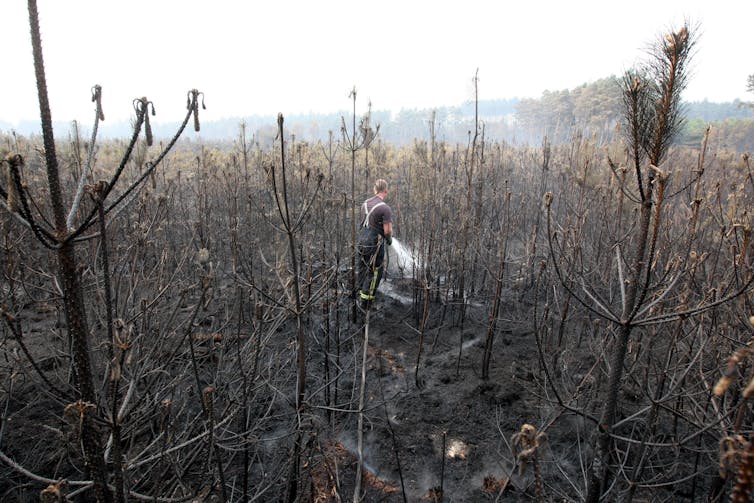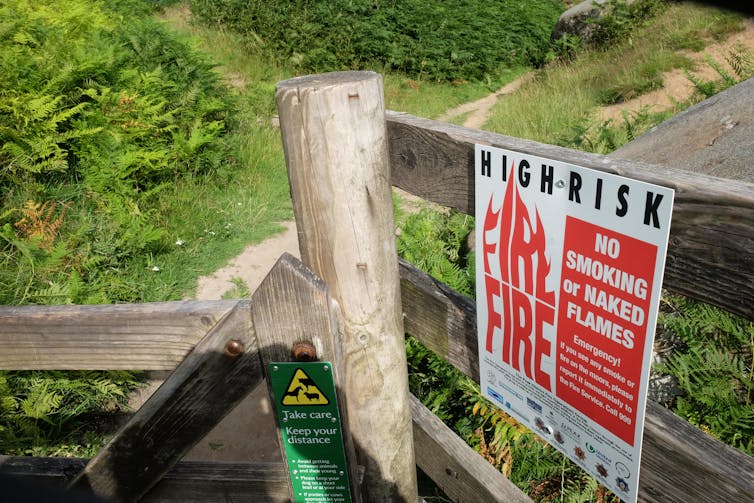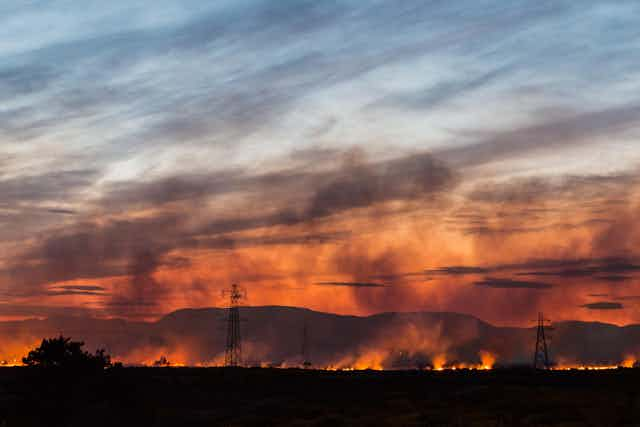The past few years have seen very severe wildfires in Australia, California, Siberia and around the Mediterranean. Wildfires have become one of the most potent symbols of the threats posed by global warming, and images of fire are widely used to illustrate climate change news stories.
People in the UK don’t often think of wildfires: it’s widely perceived that they occur in hot, dry places. But the wildfire danger in the UK is real. While the vast majority are small, several fires in recent years have threatened houses and infrastructure. Fires have burned through moorland and forests, and even passed through an onshore wind farm in Scotland. Although actual damage to property and harm to people has so far been limited, dealing with wildfires costs fire and rescue services up to £55 million per year.

Wildfires in the UK typically occur on moorland or heathland, and are almost always the result of some human action, sometimes deliberate but more usually accidental or inadvertent. The initial spark is unpredictable, but whether a spark leads to a wildfire depends on how much dry material is available to burn, and whether it is sufficiently windy for fire to spread. While we cannot say that climate change will alter the chance of getting a spark, we can be more confident that the conditions conducive to fire are likely to change into the future. Climate change will increase fire danger.
By how much? Colleagues and I recently estimated this by combining our version of the fire danger model used by the Met Office with the latest climate projections. The fire danger model indexes danger using temperature, rainfall, humidity, wind and evaporation to estimate how much dry material is available to burn and whether a fire will spread. It is based on an approach used in Canada, and a similar model is used to monitor fire danger in New Zealand and across Europe.
Using this model, we then calculated the level of fire danger up to the year 2100 in a low emissions scenario where climate change was relatively modest, and in a high emissions scenario with more extreme change.

The numbers vary with indicator, but in general we predict there will be large increases in fire danger across the UK. For example, in south east England there are currently around 20 days per year on average with “very high” fire danger, and with high emissions this rises to more than 50 days by the 2050s and around 90 days by the 2080s. In north west England, there are around five “very high” danger days per year, and this would increase to around ten and 30 by the 2050s and 2080s respectively.
The fire danger season is also likely to grow longer. Most of the increase is due to higher temperatures drying out surface material, but lower humidity also increases fire danger along with reductions in summer rainfall. Where and when fires occur in practice – and therefore how fire risk changes in different places – will depend on where and when fires are started. However, a warmer and drier climate means fire danger increases everywhere.
While the precise amount of danger and risk will depend on future emissions, our research implies that greater attention needs to be given to the danger of wildfires. That means factoring them into emergency planning and the regulations that guide land use, and in the development of guidelines for activities such as access to moorland or controlled land management burns that may inadvertently trigger fires. The UK won’t turn into Australia or California overnight, but it’s time to prepare for the worst.

